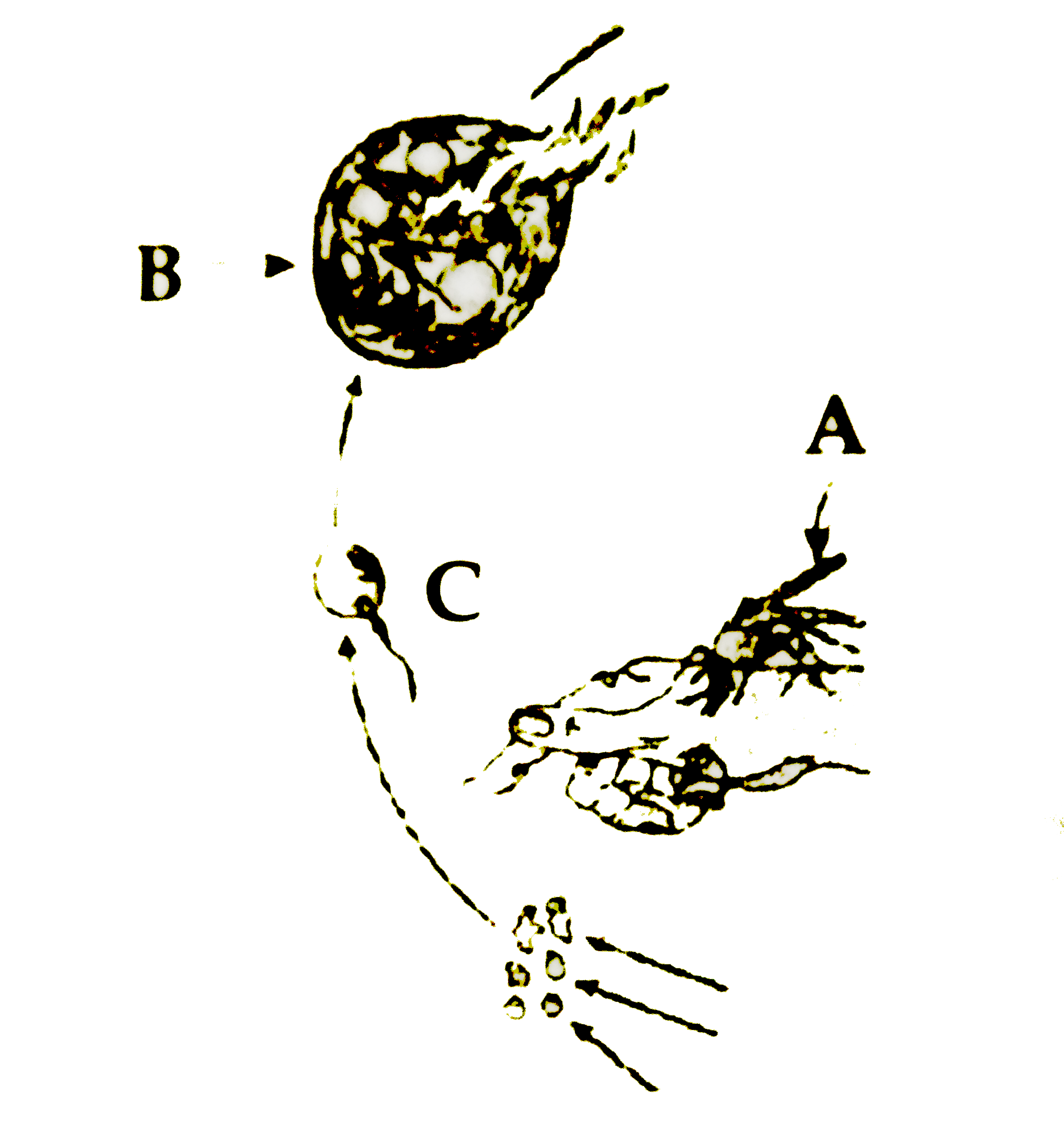The malarial parasites initially multiply within the liver cells and then attack the red blood cells (RBCs) resulting in their rupture. The rupture of RBCs is associated with release of
Hirudin
Heparin
Heptoin
Haemozoin
The correct Answer is:D
Step by step video & image solution for The malarial parasites initially multiply within the liver cells and then attack the red blood cells (RBCs) resulting in their rupture. The rupture of RBCs is associated with release of by Biology experts to help you in doubts & scoring excellent marks in Class 12 exams.
Topper's Solved these Questions
- BOOK - DINESH PUBLICATION ENGLISHCHAPTER - HUMAN HEALTH AND DISEASEEXERCISE - CHECK YOUR GRASP17videos
HUMAN HEALTH AND DISEASE
- BOOK - DINESH PUBLICATION ENGLISHCHAPTER - HUMAN HEALTH AND DISEASEEXERCISE - CHECK YOUR GRASP17videos
HUMAN HEALTH AND DISEASE
- BOOK - DINESH PUBLICATION ENGLISHCHAPTER - HUMAN EVOLUTIONEXERCISE - Brain Teasers-VII181videos
HUMAN EVOLUTION
- BOOK - DINESH PUBLICATION ENGLISHCHAPTER - HUMAN REPRODUCTIONEXERCISE - MCQ770videos
HUMAN REPRODUCTION
Similar Questions
Knowledge Check
- Question 1 - Select One
Study carefully the following stages of life cycle of malarial parasite i.e., Plasmodium. Arrange these stages in the correct sequence and select the correct answer.
1. Sporozoites leave the blood stream and enter the liver cells of man.
2. Sporozoites present in the salivary glands of female Anopheles mosquito are injected into the blood stream of man.
3. The parasite reproduces asexually in RBCs, resulting in bursting of RBCs and causing the cycles of fever, relased parasites infect new RBCs.
4. The parasite reproduces asexually in liver cells, ultimately causing the rupturing of cells.
5. Two types of gametocytes i.e., microgametocytes and macrogametocytes develop in the RBCs.
6. Female Anopheleles mosquito takes up the gametocytes with blood meal of an infected person.
7. Mature infective stage of the parasite i.e., sporozoites escape from intestine and migrate to the mosquito's salivary glands.
8. Fertilisation and developmental stages of the parasite take place in mosquito's stomach.A(a) 2→1→4→3→5→6→8→7B(b) 2→4→1→3→5→6→7→8C(c) 1→2→4→3→5→6→8→7D(d) 6→8→7→4→5→2→3→1
Select the correct option to fill up the blanks.
(i) Diseases which are easily transmitted from one person to another, are called ______ diseases.
(ii) In human body, parasite of malaria initially multiplies within the ____ and then attack the ______.
(iii) _____ is the yellowish fluid secreted by mother during the initial days of lactation.
(iv) _____ and ____ are the primary lymphoid organs.View Solution(a) State what happens in the human body when malarial parasites infected RBCs burst to release the parasites in the blood.
(b) Mention the specific sites in the host body where production of
(i) sporozoites and (ii) gametocytes take place in the life cycle of the malarial parasites.View SolutionState true or false. Crenation of red blood cells results when the red blood cells lose water into a fluid environment that contains more solutes than the cell.
View SolutionRead the statements given below. Identify which of them are true and which of them are false. Select the correct option after referring to the table.
I. Malaria is caused by a protozoan know as plasmodium.
II. Plasmodium vivax malaria is the most serious one and can be fatal .
III. Plasmodium enters the female body by the bite of the female Anopheles mosquito.
IV. The parasites initially attack the liver cells and then multiple in the WBCs causing their rupture.View SolutionStudy a part of the life cycle of malarial parasite given below. Answer the questions that follows: (a) Mention the roles of 'A' in the life cycle of the malarial parasite.
(b) Name the event 'C' and the organ where this event occurs .
(c) Identify the organ 'B' and name the cells being released from it.
 View Solution
View SolutionStudy a part of the life cycle of malarial parasite given below. Answer the questions that follows: (a) Mention the roles of 'A' in the life cycle of the malarial parasite.
(b) Name the event 'C' and the organ where this event occurs .
(c) Identify the organ 'B' and name the cells being released from it.
 View Solution
View SolutionAssertion :− Smallest blood cell is RBC
Reason :− Platelets are cell fragments not true cells.View Solution

